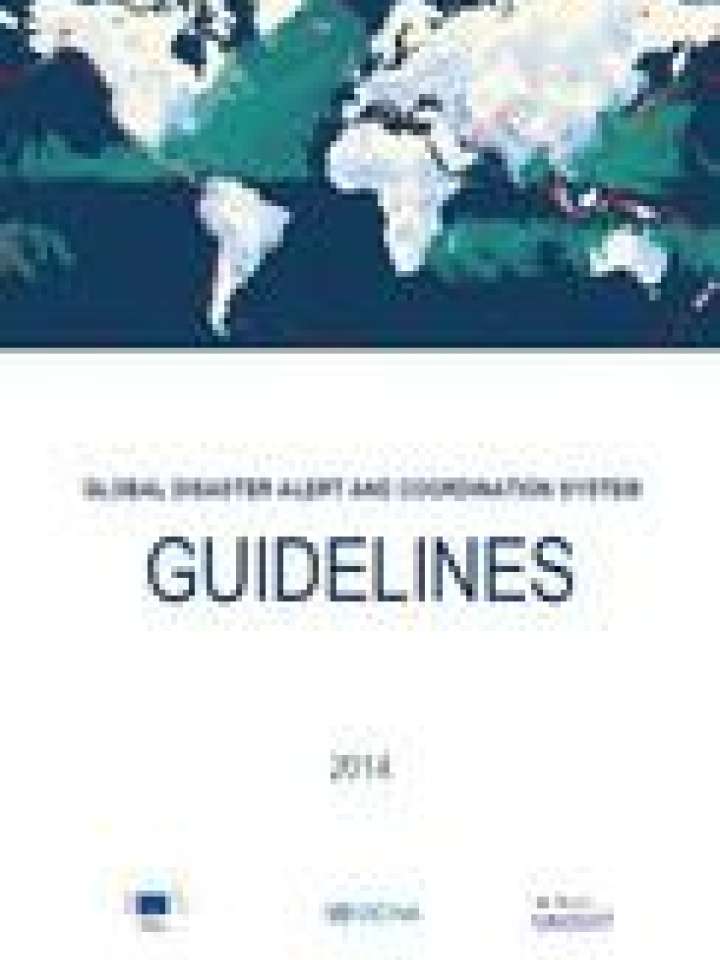Global Disaster Alert And Coordination System guidelines
These guidelines provide up-to-date information on the Global Disaster Alert and Coordination System (GDACS) tools and services, and explain how they can be used by disaster managers in emergencies, allowing responders to adequately prepare. It considers the following disaster information systems and online coordination tools:
- GDACS Disaster Alerts, which are issued and disseminated to some 25,000 subscribers immediately following sudden-onset disasters. The automatic estimates and risk analysis – the basis of the alerts - are provided by the European Commission Joint Research Centre (JRC) and the Global Flood Observatory.
- The Virtual OSOCC – a password-restricted online platform for real-time information exchange and cooperation among all actors in the first phase of the disaster. Information updates from the affected country and international responders are moderated by a dedicated team. The Virtual OSOCC has some 19,000 registered users, and is managed by the United Nations Office for the Coordination of Humanitarian Affairs (OCHA).
- Maps and satellite imagery from various providers, including UNOSAT and MapAction, are shared on the Virtual OSOCC. The GDACS Satellite Mapping and Coordination System (SMCS) provides a communication and coordination platform where organizations may monitor and inform stakeholders of their completed, current and future mapping activities during emergencies. This service is facilitated by the United Nations Institute for Training and Re search (UNITAR) Operational Satellite Applications Programme (UNOSAT).
- A Science Portal dedicated to several scientific communities with special interests and a number of Expert Working Groups; the Portal is managed by European Commission JRC.
The GDACS was created as a cooperation framework between the United Nations and the European Commission in 2004, in order to address significant gaps in information collection and analysis in the early phase of major sudden-onset disasters. For the past decade, GDACS has drawn on the collective capacity of disaster managers and information systems worldwide to facilitate international information exchange and decision-making.
The guidelines complement existing guidance materials, including the International Search and Rescue Advisory Group (INSARAG) Guidelines, the United Nations Disaster Assessment and Coordination (UNDAC) Field Handbook, publications by the International Federation of Red Cross and Red Crescent Societies (IFRC), and Standard Operating Procedures from the European Community Mechanism for Civil Protection, International Humanitarian Partnership (IHP), and the Euro Atlantic Disaster Response Coordination Centre (EADRCC).
Explore further
